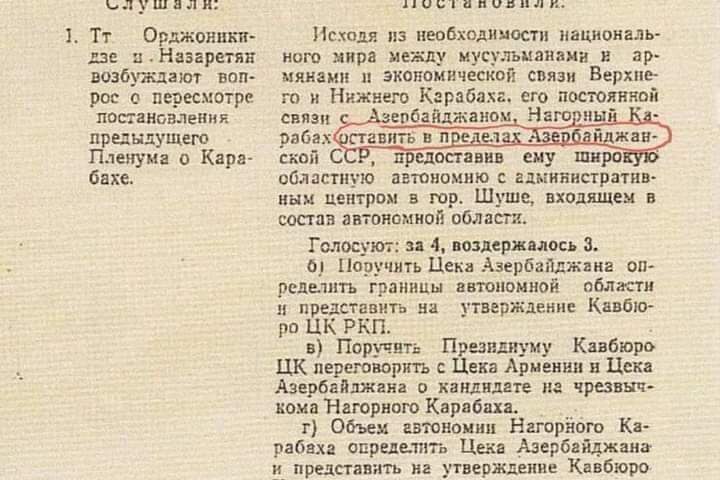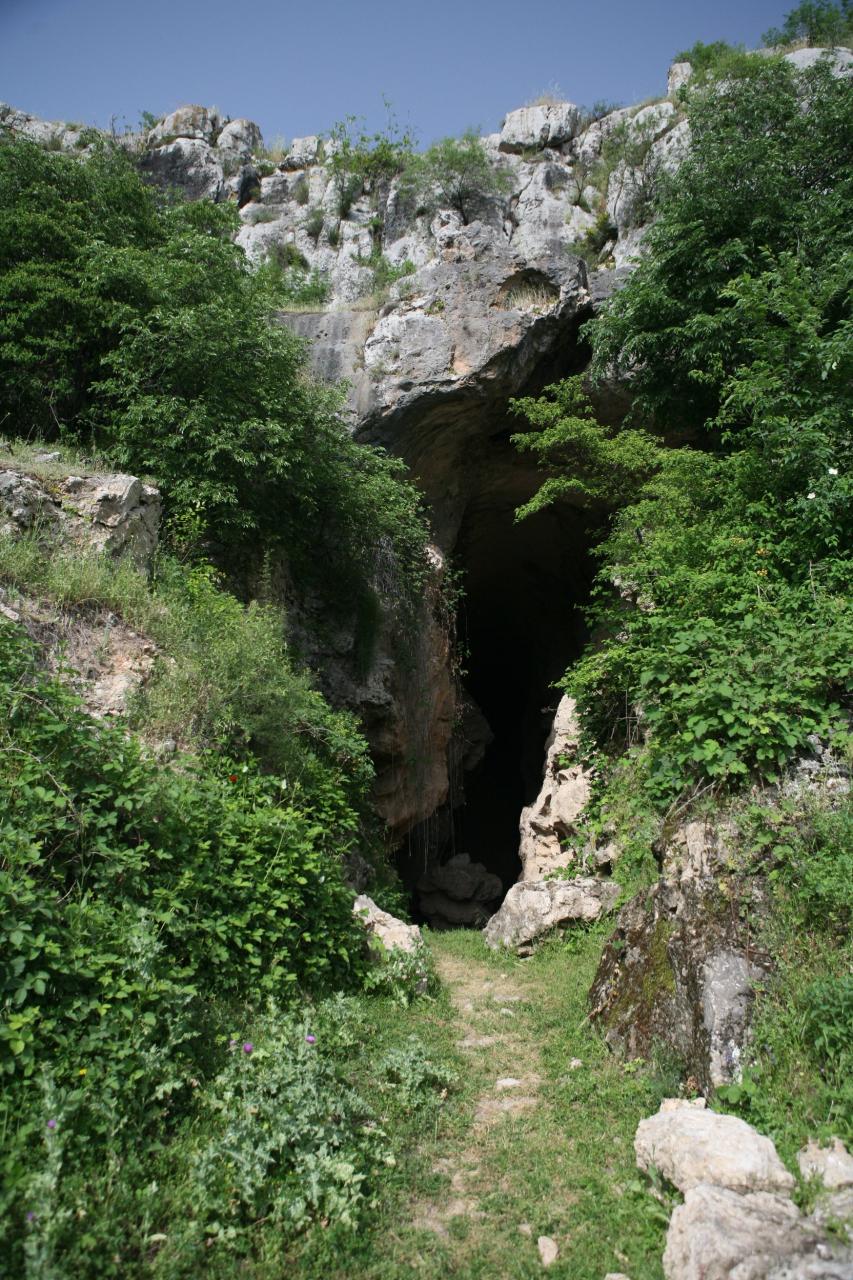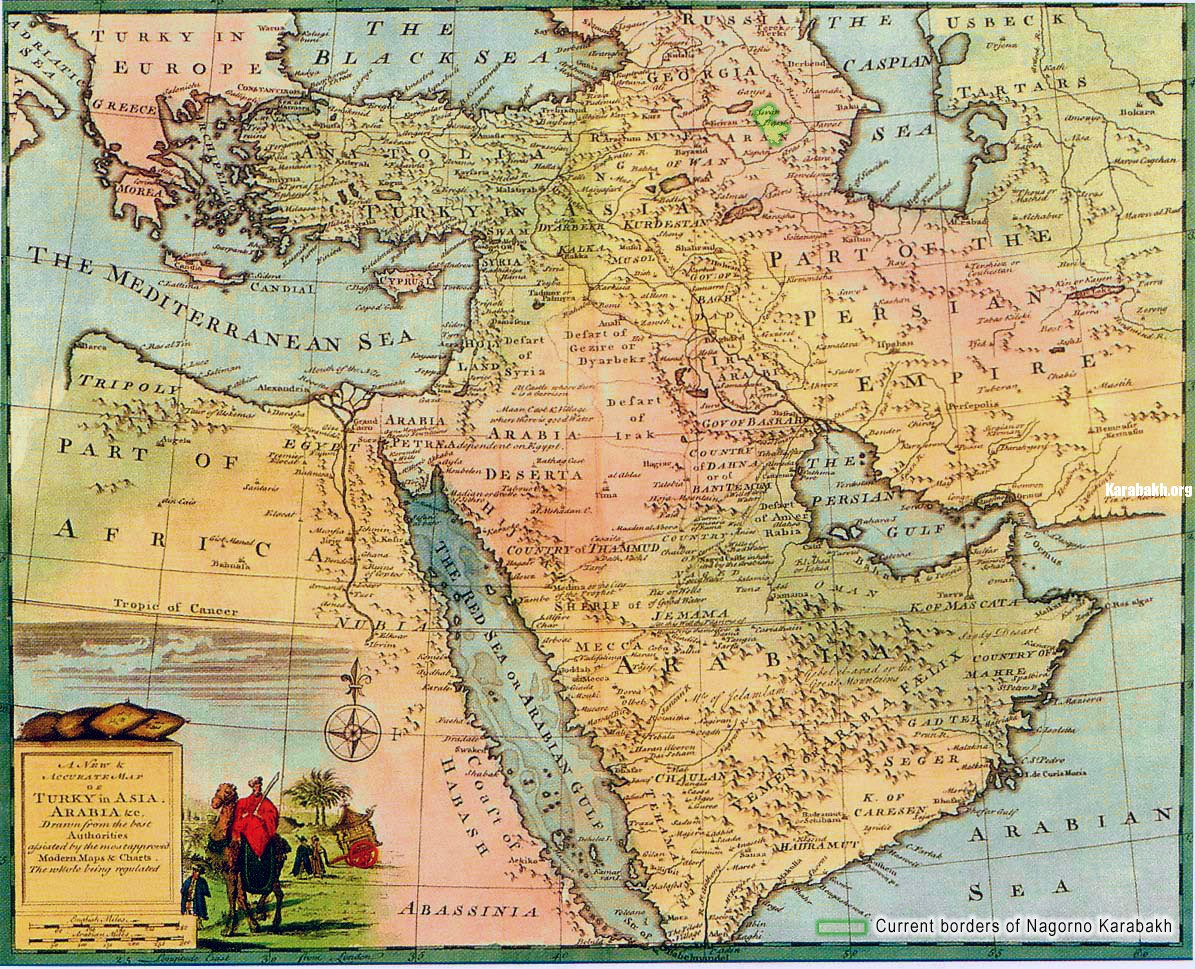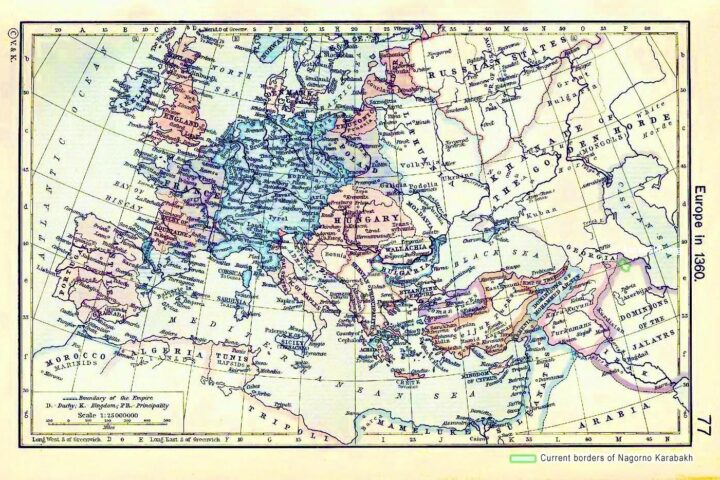Karabakh and the Azeri clans living in this region (ex. Karamanlu, Qajar etc) have played an important role in the political life of these Azerbaijanian states.
At the end of XIV c. Azerbaijan underwent a new invasion from the East. Tamerlan’s hordes carried out devastating assault against the country and the neighboring territories. After his invasion, his son Miranshah began to rule Azerbaijan. Karabakh became Tamerlan’s winter residence. But soon after Tamerlan’s death (1405) his vast empire impetuously fell into pieces. The king of Shirvan (Shirvanshah) Ibrahim I (1382-1417) headed the struggle against the Timurids’ supremacy in Azerbaijan. In a number of towns and places insurrections against the foreign invaders took place. This allowed Shirvanshah Ibrahim to pass the Kura river in 1406 and take control over Ganje and most part of Karabakh. Anti-Timurid insurrection also began in neighboring Georgia, the ruler of which allied himself with Shirvanshah. At this time the ruler (amir) of Karabakh was Yar Ahmed from clan of Karamanlu.13 Amir Yar Ahmed along with other feudal lords united with Shirvanshah against the Timurids. United forces of the Azeri rulers liberated North Azerbaijan from foreign invaders.
Approximately in the same time, Kara Yousif, the head of the Kara-Koyunlu dynasty and his allies defeated the Timurids in the South Azerbaijan. After victory over the foreign invaders the Karabakh clan of Karamanlu allied itself with Kara-Koyunlu and consequently, played an important role in the history of this state. Yar Ahmed Karamanlu took an active part in the battle between Kara Yousif and the united forces of Shirvanshah Ibrahim, the ruler of Sheki Sidi Ahmed and the Georgian king Constantine. Kara Yousif supported by the Karabakh forces won the victory in this battle.
In 1410 Kara Yousif established a new state of Kara-Koyunlu, with the capital in Tabriz. The territory of Azerbaijanian State of Kara-Koyunlu was consisted of the territories of the South Azerbaijan, Karabakh, the territory of present-day Armenia and parts of eastern Anatolia and Iraq.
After Kara Yousif’s death the Kara-Koyunlu State weakened as a result of feudal quarrels and continuous attacks of the Timurids to Azerbaijan. In the meantime, with weakening of the Kara-Koyunlu State, another dynasty- Ak-Koyunlu began to rise in Azerbaijan.
Kara-Koyunlu and Ak-Koyunlu were related Turk clans of Oghuz branch, which have played an important role in formation of the Azeri people. They were engaged, mainly, in sheep-raising and had black and white sheep portrayed on their flags, therefore, they were called, respectively, Kara-Koyunlu (black-sheepers) and Ak-Koyunlu (white-sheepers).
In 1468 the Ak-Koyunlus under Uzun (Tall) Hasan overthrew the last Kara-Koyunlu king Jahanshah and founded the State of Ak-Koyunlu consisted, basically, of the same territory and with the same capital in Tabriz.
There are few concrete information about the history of Karabakh in XIV-XV cc. It’s known, that during the rule of Uzun Hasan’s son Sultan Yakub (1478-1490), Karabakh was, as before, administered by the appointees of the central government, chosen out of the chiefs of the local clans. The historian of that time Fazlullah ibn Ruzbihan gives some interesting information about Karabakh. He mentions a community of zimmies, who lived in Jalbert (Chelaberd) district in Barda region. These zimmies, under the name of which the author, undoubtedly, means the descendants of the Christian Albanians, «lived in peace and paid jizye [a tax imposed to the non-Moslem population] and ushr (1/10 tax) and were freed from suffering and evil»14. Ibn Ruzbihan also points that this district was the property (olke) of the supreme judge of the state (kazi-al-kuzat)15.
Karabakh is also mentioned in description of the events during the rule of Sultan Yakub’s son Baysungur. A battle between Baysungur and Rustam Mirza, who disputed the throne, took place in 1492 in the territory of Karabakh. As above-mentioned historian noted, Rustam Mirza got the support of the clan of Qajar living in Karabakh and as a result of this, Baysungur was defeated and killed.16
13. Id. chap. IV, p. 82;
14. Id. p. 85;
15. Id.
16. Id.








